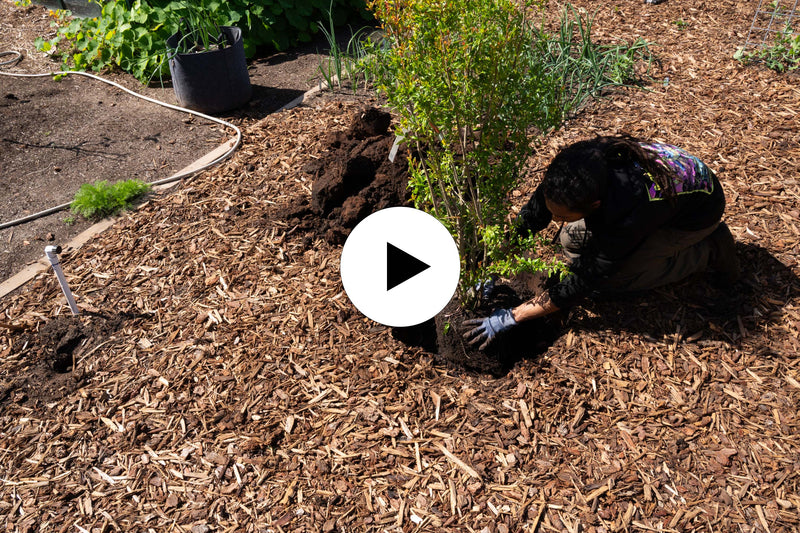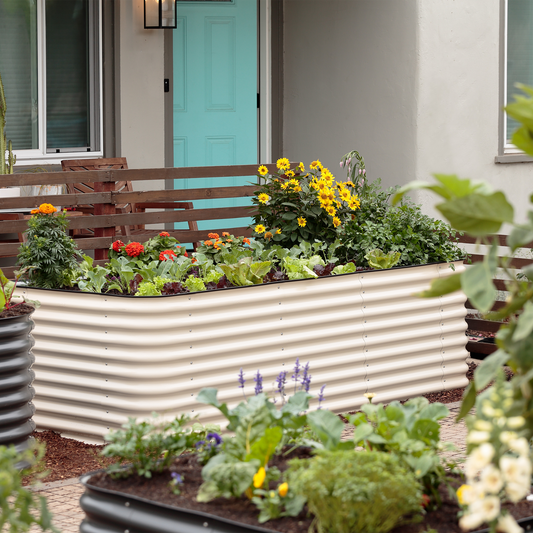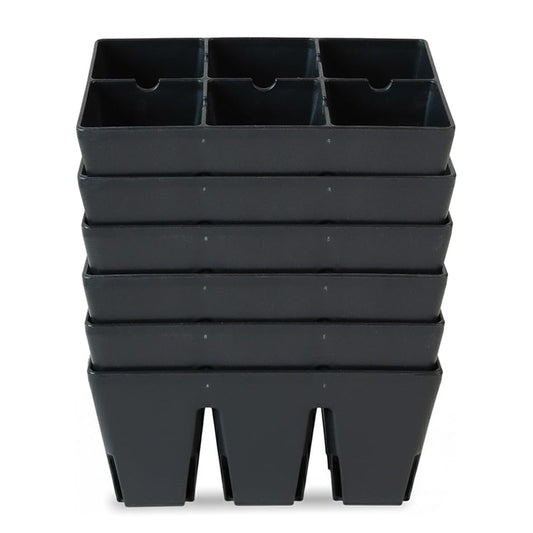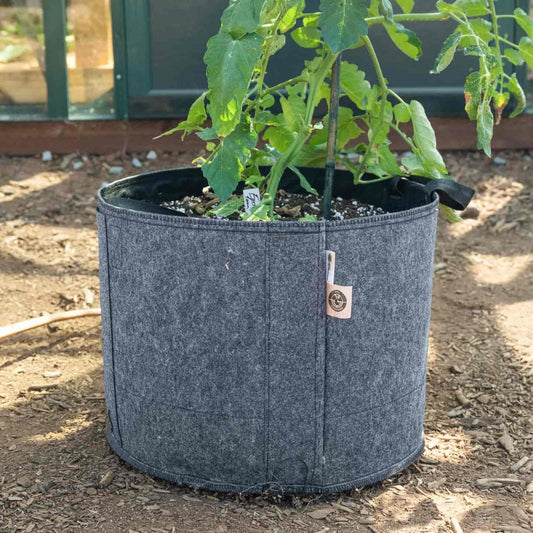

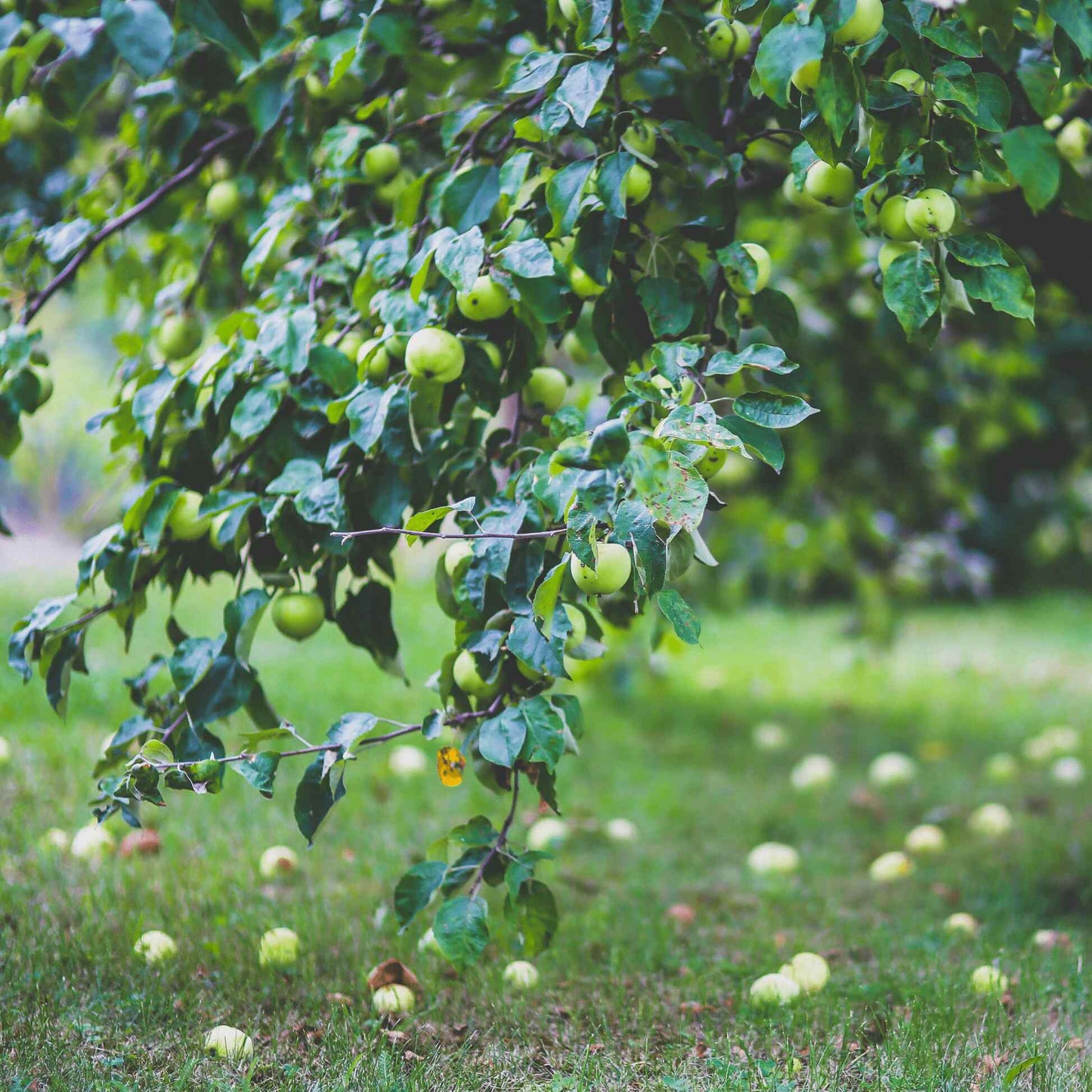
Granny Smith Apple Tree
View More Planting Info
Choose a location with full sun and rich, well-draining soil. As the mature height is around 15 feet, plant the trees a similar distance from other trees or structures in your garden to avoid root disturbance. Dig a hole twice as wide and the same depth as the root ball. Place the tree in the hole, ensuring it's straight, and backfill with soil, tamping down gently to remove air pockets. Water thoroughly to settle the soil around the roots. Apply a layer of mulch around 3-4 inches thick around the base of the tree after planting.
Sunlight:
Plant in full sun, providing at least 6 to 8 hours of direct sunlight per day.
Watering:
Water around once per week after planting, slowing watering once the roots are established.
Fertilizing:
Feed annually in early spring with a balanced, slow-release fertilizer to replenish nutrients and promote new growth.
- Product Info
- Care and Maintenance
- Planting Care
- Growing Zone
Product Info
Mature Height: 12-15 ft.
Mature Width: 8-10 ft.
Sunlight: Full Sun
Growth Rate: Moderate
Does Not Ship To: AZ, CA, ID, OR, WA
Care and Maintenance
Watering: Water your apple tree regularly, as the top few inches of soil start to dry out. Watering frequency will depend on your climate and the position of the tree. Young trees need weekly watering to establish strong roots, while established trees require less frequent but deeper watering.
Fertilizing: Fertilize annually in early spring with a balanced slow-release fertilizer before new growth appears. Apply fertilizer at the drip line. Then increase the diameter as the drip line grows.
Pruning: Prune in late winter or early spring to improve airflow and encourage new growth. Remove dead, crossing, or underperforming branches.
Pests and Diseases: Granny Smith trees are prone to apple scab, powdery mildew, and cedar apple rust. Fire blight is also possible, but not as common as other diseases. When it comes to pests, apple maggots and codling moths are the ones to watch.
Pollination: Granny Smith apples are self-pollinating, so you don’t need another apple variety to produce fruits. However, they will perform much better when cross-pollinated. Plant within 50 feet of another compatible variety for best fruit set. Or purchase the Apple Orchard, which includes Gala, Fuji, Granny Smith, and Honeycrisp trees.
Harvesting: Apples are typically ready to harvest in late September to the start of October, depending on climate. Harvest when the fruits are fully colored and the flesh is firm. Don’t pull the fruits off the tree before they change color.
Recovery Time: Transitioning from our nursery to your home can be a bit of a shock to your plant. A short acclimation period helps it recover and reduces stress.
Climate Adjustment: Every environment is unique. Giving your plant time to adjust to the local climate, humidity, and light conditions in a shady spot will set it up for better growth and health.
How to Acclimate Your Plant: Keep the plant in its container and place it in a shady, sheltered area away from high winds. Ensure it's watered adequately – the soil should be moist but not waterlogged. Monitor the plant for any signs of distress and allow it to adjust for a few days before planting. After a few days of acclimation, your plant will be better prepared to thrive in its new home for years to come.
Planting Care
Sunlight: Plant in full sun, providing at least 6 to 8 hours of direct sunlight per day.
Watering: Water around once per week after planting, slowing watering once the roots are established.
Fertilizer: Feed annually in early spring with a balanced, slow-release fertilizer to replenish nutrients and promote new growth.
Growing Zone
Growing Zone 5-8
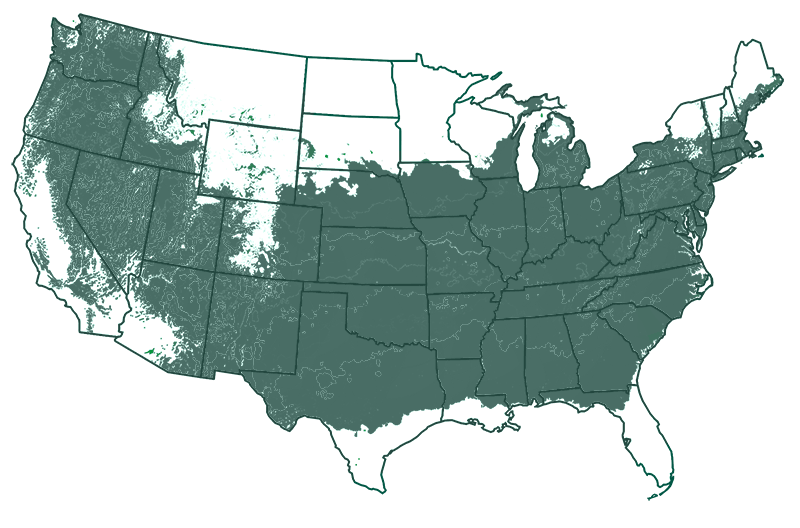
Fruit Trees & Bushes Delivered to Your Doorstep
Unpack, Plant and Grow!
